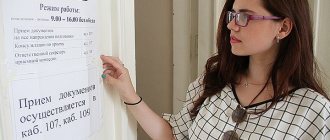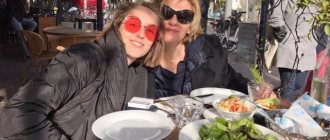Moscow celebrates its 873rd birthday on September 5 and 6. This time, due to the coronavirus pandemic, there are no large celebrations in the capital - safety comes first, and the epidemiological situation is still difficult. However, parks, museums and other cultural venues have prepared small programs. This is how City Day will take place in Moscow on Sunday, September 6, 2020.
IMPORTANT! If you go for a walk, don't forget about safety! If possible, avoid large crowds in confined spaces and wear a mask.
FESTIVALS
Reenactment Festival
The festival of reenactors will be held at several sites in the city. Part of the Kolomenskoye museum-reserve will turn into a 17th-century settlement, where Moscow archers will fight with sabers, pikes and muskets, show how the sovereign’s troops were reviewed, and talk about peaceful life. In Izmailovsky Park, guests will “travel” back to the 19th century, during the time of Napoleon’s invasion. Reenactors in the image of Russian and French soldiers of 1812 will present the Battle of the Berezina, which, as you remember, ended in a complete victory for the Russians. In the Mitino park they will show an episode of the First World War: a front-line train, bombed tracks, a station in 1914, officers, nurses - visitors will be able to briefly go back to that difficult time for our country. And in Victory Park in Zelenograd, it’s 1941: the registration of volunteers for the people’s militia is in full swing, a field kitchen is in operation, machine-gun positions have been deployed. Guests will see an art object in the form of a tank, on which tank combat techniques were practiced, models of weapons from the Second World War and much more.
Ice cream festival
At VDNKh in the Technograd pavilion at the ice cream festival you will be able to taste more than 40 types of this deliciousness and get acquainted with the most unexpected combinations of flavors: lavender, banana and even bubble gum with explosive caramel! Visitors will also be treated to a quest from leading ice cream manufacturers and a test drive of exotic types, for example, with bacon, pumpkin or sun-dried tomatoes. The chefs will talk about the features of different types of ice cream and methods of their preparation, share the secrets of confectionery skills and open the door to the panoramic laboratory of the bartender-barista. The festival site is open from 10.00 to 21.00.
The best photos of Moscow City Day
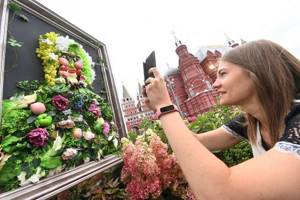
Although there were no fireworks or loud concerts in 2020, the townspeople were not at all upset; Muscovites unanimously decided that safety came first. Moreover, the school year has begun, it’s time for the metropolis to restore and catch up with the lost rhythm. The holiday turned out to be homely and cozy, and large-scale festivities are yet to come.
View photo
Linen products
Particular attention is drawn to the interior of a peasant hut or, as they also called it in the Smolensk region, a hut. The main decoration of the hut were linen towels with Smolensk “decorations”, the so-called patterns on the linen, embroidered or woven.
The towels are decorated with icons in the “red” corner, and the mirror, and the walls; they were hung on wooden nails “matches” or “hooks”, hence the name “sticks”, “hooks”.
The bride's skill in weaving was determined by wooden nails; if they bent or broke due to the weight of the towel, it means that the fabric was thick, rough, and the girl did not work hard enough as a girl.
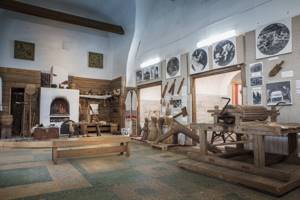
On the second floor of the museum there is a fashionable collection of peasant clothing from the late 19th - early 20th centuries, the best designer of all time - the people.
Visitors get acquainted with Smolensk folk costume - men's and women's. And also with folk customs associated with linen products.
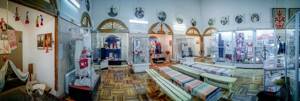
Many items of clothing, hats, jewelry, and belts have ancient forgotten names:
- "nasovka"
- "andarak"
- "kabat"
- "cloth maker"
- "chukman"
- "sayan"
- "zapon"
- "basting"
- "magpie",
- "warrior"
- "caps"
- "Gashnik".
Our ancestors loved linen clothes. “Whoever is dressed in linen will live to be a hundred years old.” Linen clothing is durable, the older it is, the softer and more comfortable it is.
Smolensk shirts, aprons, and towels were richly decorated with patterns, mostly geometric, that have come down to the present day from time immemorial. The basis of the ornament is made up of rhombuses, triangles, oblique and straight crosses, there are images of male and female figures, birds and horses, garlands of flowers, leaves and berries (roses, rose hips, grapes, viburnum).
“Ornaments” (patterns on fabric) had funny Smolensk names:
- "combs"
- "leashes"
- “frogs are simple and frizzy”,
- "staples"
- "wedges", "
- thorns",
- "loaches", "
- Kozyulki",
- "chicken feet"
- "curly rams"
- "mills"
- "crow's feet"
- "towns".
Often, towels and aprons were decorated with touching inscriptions:
- “I love you sincerely, I give you forever,”
- “Wipe yourself, don’t lose yourself, remember me more often,”
- "Remember me on the other side"
- “My work was fun, I was eager to embroider, a bird was singing in the garden, and I was embroidering an apron,”
- “To whom I love, I give.”
There is also a funny inscription on the towel: “The hand embroidered was not for a fool,” apparently the girl knew her worth and made high demands on the groom, although she herself made a mistake in the word “fool” and embroidered “not for a fool.” After all, many needlewomen were illiterate or completely illiterate; the letters seemed to them just beautiful patterns.
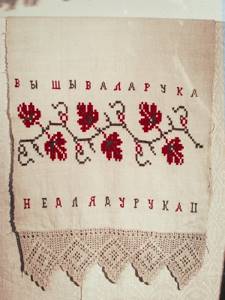
The costumes of our ancestors could tell about the marital status of their owners: married or not; Is it possible to marry this girl or is it too early. The women's Smolensk costume is very diverse, because the Smolensk region is a border region, on the one hand Russia, on the other Belarus.
In the north-eastern part of the Smolensk region they wore a slanted sundress, the wide hem of which lay in soft folds at the feet, and with its swaying created the effect that the woman was not walking, but floating, without touching the ground, it was not for nothing that girls and women were called “swans” in folk poetry, "baby boys"; in the southeast - poneva, which was considered a symbol of marriage - “woman’s collar”, “woman’s care”, “woman’s bondage”, because putting a poneva on a girl meant that she could be wooed, she was of age; in the southwest of the Smolensk region, in addition to ponevs, they wore straight sundresses and “andaraki” skirts gathered at the waist, to which a circular “kabat” bodice could be sewn.
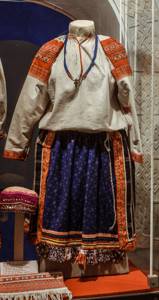
Andaraki skirts made a woman look fuller, but thin Smolensk peasant women liked it; it was believed that wearing an andarak made a woman look thrifty, homely, and prosperous. Having several skirts (andaraks) and bodices (kabats), it was possible to combine them in different ways, which made it possible to diversify your outfit with a small amount of clothing.
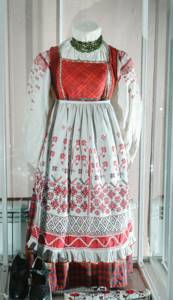
The main clothing for boys and men were linen shirts, which were worn untucked with ports, and the ports were tucked into boots, or covered to the knees with linen onuchs (foot wraps). Old men wore long shirts down to their knees, boys and grown men wore long shirts just below their hips.
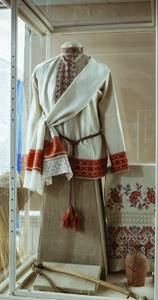
You can learn a lot of interesting things about the life of our ancestors in the Smolensk Flax Museum; the museum preserves in people’s memory everything connected with the cultivation and processing of flax, and flax meant a lot to our ancestors, it was not without reason that they said: “Daily bread, and flax almighty.”
For guests, visiting the museum evokes many memories of their relatives and their roots. Very often you can hear: “My grandmother also had a towel on her icons, this is a memory of her mother, my great-grandmother, because there are no photographs left”; “In the village, my grandmother had rugs just like yours.”
Many of us spent our childhood holidays with our grandparents in the village or grew up there and still remember how we slept on the stove, ate potatoes stewed in a cast iron pot, poured milk into a mug from a “gorlacha” pot, and walked on wicker and knitted rugs at home.
Many, as schoolchildren, students, workers and employees, went to the collective farm “to harvest flax” and helped the collective farmers harvest the crops. Good childhood and youth memories come to life in the Smolensk Flax Museum. Apparently, it was not without reason that the ancient Greeks considered linen a symbol of purity, fidelity and love; it awakens the purest memories of the most dear and beloved people and places, encourages us not to forget and remain faithful and love them.
As the song says, “Oh, my flax, my flax, all the people are in love with you. Blue like the sky, pure, golden, silky, be strong and strong!”
CONCERTS
Concert at the Green Theater at VDNKh
On the second day of the City Day celebration at VDNKh, popular artists will perform at the Green Theater venue from morning to evening. From 11:00 to 13:00 and 15:00 to 17:00 Arthur Laurent & Loud Ants Jazz Band, ORLOVE, Zvonky, Dj Dee will sing for the guests of the exhibition. And from 19:00 to 22:00 the group “Davinci” and Lesha Svik will perform. Admission to the events is free, with pre-registration required. to comply with all sanitary standards.
Concert at Zaryadye
In Zaryadye on September 6, several outstanding performances will take place on the stage of the Bolshoi Amphitheater. At 15:00 the ironic Moscow group with the Far Eastern name “Komsomolsk” and the sunny singer from St. Petersburg Tosya Chaikina will perform their songs. At 17.30 the baton will be picked up by two bright girls Dora and O! Margot, who will sing about love, friendship and the difficulties of adolescence. And the concert will end at 20:00 with a performance by YАВь and Moscow singer Poly Dudka. Pre-registration is also required for the concert in Zaryadye.
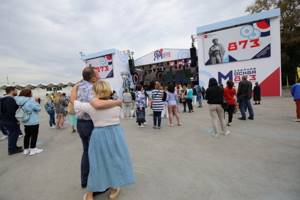
Photo: Andrey Abramov
Concert in Sokolniki
In honor of the birthday of your beloved city, a concert will be held in the park on September 6, where popular performers will perform. The performances will begin at the park's Festival Square at 10 a.m. and will last until the evening. Such groups and performers as Reverbs, Excite-Jazz Band, Ibsen Band, Magic People, Wonderband Accapella, Vizavi Brass Band and many others will appear on the stage of Sokolniki Park.
Concert at the House of Russian Abroad named after A.I. Solzhenitsyn
On September 6 at 17.00 the duo Nota Silver will take the stage - dom player Maria Lugovskaya and accordion player Sergei Lugovskoy will present their own arrangements of famous works of various genres and styles. And also rock musician Stanislav Bartenev, leader of the rock group “If,” and Boleslav Voishko, soloist of the orchestras of Vladimir Starostin and Oleg Ludstrem, winner and laureate of many festivals. This concert evening will be hosted by poetess Nina Kartasheva, author of the collections “Poems from Russia”, “Pure Image”, “Imperial Roses” and others. Admission to the concert is free, you need to register by phone: +7 (495) 137-84-08.
Tools for processing flax
Rollers, devices for washing clothes and threshing flax seeds. “Durable flax has two faces: the seed for the seed and the thread for the fabric.” In the Smolensk region, the felt had another name - “pranik” or “pralinik”.
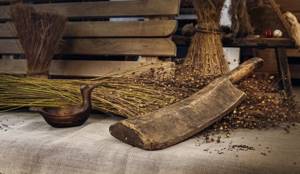
Flax mills are tools for processing threshed, soaked, and then dried flax stems - flax trusts. During the work, the soft fiber was separated from the hard part of the stem. People said: “mine longer, there will be more fiber,” “if you don’t crush it with a hammer, you’ll remember it at the spinning wheel,” that is, you’ll prick, hurt your hands with the remnants of the stem—“fire.”
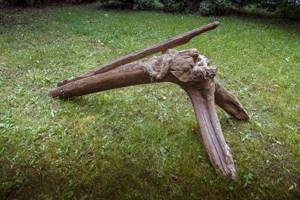
Trepals , which were used to beat out the fiber, beat out the “bonfire” and coarse tangled fibers - “rags”.
Combs for final removal of fires from fiber. After combing, the fiber became even, smooth and silky and could be called tow. This work required diligence and patience, it was not without reason that they said “drinking beer and dancing is not combing flax.”
The most important operation in working with flax was spinning. In the Smolensk region, the role of a spinning wheel was often played by a comb on a long stem, inserted into the hole of the bench, and flax fiber was fixed to it. Spinning from a comb made it possible to obtain the thinnest “kuzhel” thread, which is why Smolyans liked to spin not from a spinning wheel, but from a comb. “A comb is not a father, not a mother, but it will give you a shirt.”
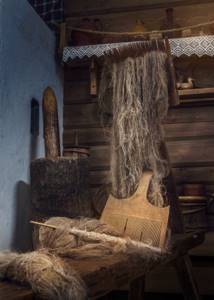
EVENTS IN THE PARKS
Gorky Park
On September 6, a series of master classes under the general title “Create your own museum” will be held here. You can take part in plein air and try yourself as an artist. Experienced teachers will help you. Also in Gorky Park you will be able to learn carpentry, making dishes on a pottery wheel, and sculpting abstract figures. Up to five people can take part in master classes at a time. Registration is also required to participate. The starting times for plein airs are 11:00, 14:00 and 17:00, master classes will be held from 11:00 to 18:00 (classes will be held every 45 minutes with a break for sanitization and through ventilation).
You can also join a dance session by choreographer, dancer and teacher Alexandra Rudik from 17:00 to 20:00. And Tatyana Bortnik, a regular author, lecturer and teacher at the Garage Museum of Contemporary Art, will give a lecture on the art of the Middle East, Korea, Japan, China, and Mongolia. Starts at 19.30. Registration is required for events.
Sokolniki
On September 6, in honor of City Day, the Sokolniki Park Museum will hold a free excursion “Park of the Soviet Period”. You will learn how modern Sokolniki was created - it was transformed into a “culture and recreation park” of a new type in 1931. Visitors will be told about the Pioneer and Schoolchild Town, about the defense work site and the parachute tower, about the one-day rest house and much more, as well as how Sokolniki turned into an international exhibition site. The tour starts at 14.00, you need to register.
How will City Day take place in Moscow?
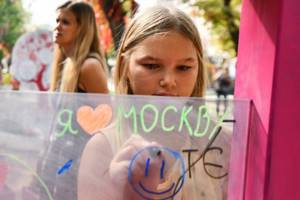
This time the holiday will be calmer - at home. This year's City Day is dedicated to museums that carefully preserve evidence of history and objects of art. The Moscow Museum project will unfold at 21 sites.
Find out details
VDNH
On the second day of the celebration of the 873rd anniversary of Moscow, VDNKh will host many different events. Among the most interesting is the battle on typewriters in the Palace of Public Services from 12 to 13:00, participants will type excerpts from famous works about Moscow for a while. In the craft park you can spend the whole day watching how candy is made at the Caramel Manufactory. There will be a lecture on the sports training of astronauts, and a documentary film “Overcoming: Challenge of Heaven” and the film “Youths in the Universe” will be shown. Also on September 6, you will be able to visit numerous exhibitions: Memory of Generations: The Great Patriotic War in the Fine Arts, Moscow. Heroes” about life in the capital during self-isolation and others.
Tagansky Park
At the main stage of the park on September 6, from ten in the morning to ten in the evening, intellectuals will fight at the “What? Where? When?". Four teams take part in the game. Every hour is a new game. The presenters will be well-known experts of the elite club - masters Andrei Kozlov, Elizaveta Ovdeenko, Diamond Owl winner Boris Levin and others. Just like the popular television show, contestants have one minute to answer a question. There will be 12 of them in total in the game. To participate, you need to pre-register, and don’t forget to take self-defense equipment with you - a mask and gloves, you can’t do without them yet.
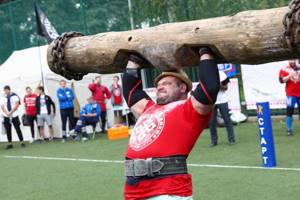
Visit the Syuyumbike gardens
The entire first floor of the National Museum of the Republic of Tatarstan will now tell about the history of the region until the second half of the 16th century. There is a Turkic yurt, an Imenkovo hut, and even the Syuyumbike Gardens. All exhibits are interactive. You can climb into the yurt and take a closer look at how a museum employee, dressed appropriately for the time of the beginning of the century, is grinding something in a pot, in the hut there are sculptures of spouses standing motionless, busy with everyday life, and the beautiful Kazan khansha is sorting through jewelry in her chambers, taking them out of a chest. You can join her, sitting down on a soft sofa, and listen to what kind of letter the servant reads to her. Taking photographs is allowed, as is touching, and distracting the participants of the mise-en-scène and museum caretakers with questions.

At the stands dedicated to the crafts that developed in Volga Bulgaria, you can see weapons, dishes, and jewelry
At the stands dedicated to the crafts that developed in Volga Bulgaria, you can see weapons, dishes, and jewelry - all made of iron. For example, the Carolina sword, darkened and corroded by time, made of iron with forging and silvering, attracts attention. It was found in Western Europe at the beginning of the 20th century. The fact that the peoples did not live in isolation, but actively migrated, traded, is also evidenced by the busts created from plaster in 1947-1949 from the remains of the inhabitants of Bulgaria: not only the wide-cheeked Bulgarin himself with long eyes, but also a Chinese woman and an Armenian...
The Bulgars’ love for construction and decoration of premises is evidenced by the massive details of the portal of the Cathedral Mosque in Bolgar, as well as tiles with remains of bright glaze.
In front of the stairs to the second floor there is a “Craft Posad” - small shops where you can see craftsmen and needlewomen practicing various crafts. You can use them to make your own jewelry-amulet or something else at master classes.
EVENTS IN MUSEUMS
House-Museum of Marina Tsvetaeva
The excursion “Ode to Walking” in honor of the City Day celebration is organized by the House-Museum of Marina Tsvetaeva. The route starts from the monument to the poetess in Borisoglebsky Lane and goes to Merzlyakovsky Lane, through places that keep memories of her life and work. The tour is free, but you must register for it. The group meets at the entrance to the house-museum. Time: from 17.00 to 18.30.
Moscow Defense Museum
On the second day of the celebration of City Day in Moscow 2020, a sightseeing tour of the museum’s exhibition “The Great Feat of the Defenders of Moscow” will take place at the Moscow Defense Museum. For children in the cinema hall there will be a cartoon parade of unique Soviet cartoons created during the Great Patriotic War. There will also be a master class on graphic drawing “On the streets of old Moscow”, a tour of the exhibition “Save and Cure: Medicine during the Great Patriotic War” and other interesting things. The festive program on September 6 starts at 10.00 and ends at 18.00.
Is it worth going to Gorki Leninskie?
To summarize, we admit that the brand “Museum that preserved eras” is quite suitable for Leninsky Gorki - there really is a lot of things preserved here and it’s worth coming here for the whole day: there is something to do for a lonely history buff, a family with children, and a group of active youth. In summer the territory is open from 9.00 to 23.00; from September to April the museum closes at 21.00. Museum sites that require tickets to visit are closed on Monday and Tuesday.
Text and photo: Anna Makarova
Were there any Bulgar women warriors?
The second floor of the museum begins in the mid-16th century with a story about the Kazan region after its annexation to the Russian state. The participants of the excursion were incredibly lucky - in the hall with weapons of that time there was a whole performance with the fighter’s equipment and parting words, it was organized by the head of the department of scientific reconstruction, Vyacheslav Khabarov. He handed the defender of the city a arquebus, a musket and a terrifying reed, which is convenient to lean on when shooting if you do not use it for its intended purpose. When asked how the Bulgarian women warriors, about whom there are legends, dressed, and whether there were any at all, he replied:
- No, these are just beautiful legends, there is no scientific confirmation of this. However, the steppe people of the Sauromatians actually lived on our territory BC. They really had Amazons. In addition, in the Alekseevsky district near Bilyar, the Tigansky burial ground was found, where Ugric tribes, the nomadic ancestors of modern Hungarians, buried their warriors. Among them, women’s “uniform” was indeed found - a combat belt, a saber and a full set of jewelry.
There is also a room here that tells about Orthodox objects of the Middle Ages. Confusion and fear are caused by the multi-kilogram chains that martyrs and holy fools voluntarily put on themselves, there are also monastic robes, icons from the workshop at the convent of the Kazan Icon of the Mother of God, as well as the most valuable Ephraim Gospel of 1606.
